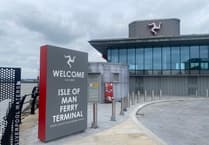A plan outlining the action needed for the Isle of Man to stay on track to reach net zero has been approved by Tynwald.
The Climate Change Plan 2022-2027, regulations for a 2030 interim target and a road map, which supports the action plan, were all backed by politicians on Tuesday.
The plan will help keep the island on course to become a carbon neutral island by 2050 and meet interim targets of a 35% reduction in emissions by 2030 and 45% by 2035.
Chief Minister Alfred Cannan said: ‘We must do everything in our power to limit the effects of climate change and future-proof our economy, so future generations can thrive.
‘The plan supports sustainable economic growth and enables us to demonstrate our climate credentials to the international community, supporting the attraction and retention of workers, businesses and investment.
‘Ambitious decarbonisation efforts across all sectors will ensure increased population does not necessarily mean increased emissions.’
The action plan assigns a percentage emission reduction target to six policy areas, including energy, transport and agriculture that must be met. It also outlines the active role the government will play with a raft of measures to protect and enhance natural carbon stores.
Chair of the government’s climate change board Daphne Caine MHK said: ‘Tynwald’s approval is a major milestone in the net zero journey. Delivering 15% emissions reductions across all sectors and total decarbonisation of our electricity supply will be immensely challenging, but it’s achievable and we must all play our part.’
Climate scientist Professor James Curran, former chief executive of the Scottish Environment Protection Agency, is the independent chair to lead the island’s Climate Change Action Plan.
He visited the island last week to help the Climate Change Team deliver a briefing on the plan.
He explained that the Isle of Man had ‘moved very fast’ in its response to climate change.
Mr Curran said: ‘My impression is that the Isle of Man has moved very fast over the last few years, it’s come a long way.
‘Talking to people as I have done in the past and on this visit I get a sense of real commitment.
‘I think the Isle of Man is actually moving at a time that is very appropriate in that so many technologies are now readily available.
‘Technology like wind generation and solar generation deliver power to the island much cheaper than traditional fossil fuels and there’s a lot of evidence gathering about how businesses and agriculture and land use management can all contribute to a better, happier, healthier, low carbon future.
‘Now is absolutely the right time to move when it’s well evidenced and economically successful.’
The climate change plan sets a target of 2050 for carbon neutrality, including interim targets to be achieved in the next 10 years.
Part of this is making the island’s electricity supply carbon neutral by 2030, amending building regulations to ensure all new builds are 97% energy efficient, and delivering a 15% sector reduction in transport emissions by 2027.
‘I believe [the targets] are quite challenging but there are many targets set for 2027 which is the end date for this first formal climate change plan,’ Professor Curran said. ‘The work has been to assess those are achievable but equally there’s still quite a bit of evidence needs to be gathered to create the detailed technical level that is required to make sure those targets are met.
‘There’s still more work to be done and there’s certainly a lot that everyone on the island, government and businesses need to do as well.’
Professor Curran said the plan was the ‘culmination of three years of advice and support [he hoped he’d] given’.
While he will be leaving his role, he said he would be keeping a keen interest in what happens in the island and how carbon neutrality, which he believes could be done before 2050, is achieved.

.jpeg?width=209&height=140&crop=209:145,smart&quality=75)


.JPG?width=209&height=140&crop=209:145,smart&quality=75)
Comments
This article has no comments yet. Be the first to leave a comment.